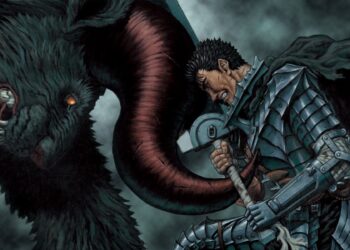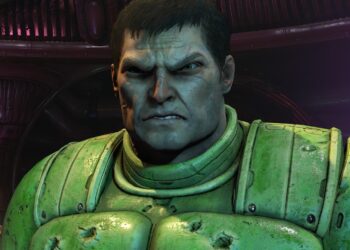Navigating the Quirks and Charms of The Outer Worlds: A Deep Dive
So, you’ve entered the Halcyon colony in The Outer Worlds. Corporations control everything, and your choices matter. It’s filled with dialogue. You face tough decisions and many shades of grey. But navigating this game can be perplexing, like corporate jargon. You probably have questions. Fear not! This guide helps you explore The Outer Worlds. We’ll tackle game mechanics, moral dilemmas, and character flaws. Explore the best companions and ponder if you can find love in a corporate dystopia. Spoiler: probably not as you think. Buckle up.
Decoding Flaws: Are They Friend or Foe?
Flaws in The Outer Worlds aren’t just cracks in your character, but a game mechanic too. Are flaws a curse or a quirky blessing? Let’s unpack this box of imperfections.
Flaws: Good, Bad, or Just Plain Complicated?
Are flaws bad? It’s a question philosophers and self-help gurus ask. The Outer Worlds presents this question in pixelated form. Flaws resemble burnt toast: undesirable yet sometimes they add something unique. Flaws can trip us up, complicate relationships, but they also make us unique and relatable. Recall when being late made you miss a traffic jam? Flaws can have silver linings. Positive Traits Can Have Drawbacks, and Flaws Aren’t All Bad. Life isn’t black and white, and neither are imperfections.
Can You Ditch Your Flaws in The Outer Worlds?
You’ve encountered a Flaw in The Outer Worlds. Perhaps you’re terrified of Raptidons or weak to plasma damage. Naturally, your first thought might be: “Can I cure this?! Get it off me!” Sorry, spacefarer. Once you have a Flaw, it’s like that regrettable tattoo you got while vacationing. Permanent. No clinic exists to erase these quirks. They are part of your journey now.
Flaw Permanence: Deal With It
Bad news alert: Flaws won’t disappear. Once embraced, they are entrenched in your character’s DNA. No take-backs, refunds, or undo buttons exist. It’s not temporary; it’s permanent. Think carefully before accepting debilitating fears or unfamiliar susceptibilities. It’s a lifelong commitment, or rather, a playthrough-long commitment.
Should You Embrace Your Inner Flawed Hero?
Acceptance isn’t just a grief stage; it’s a useful life skill. In The Outer Worlds, acceptance may help you strategize. Should you embrace these digital defects? Consider the benefit. Accepting flaws can be liberating. It’s about acknowledging limitations and maybe finding strength in them. Think of it as digital self-acceptance. Embracing flaws can boost gaming experience and deepen understanding of strengths and weaknesses. Learning to embrace your flaws, real or digital, empowers you. Plus, you’ll earn a Perk point, so it’s not all bad.
Are Flaws Actually Worth Taking?
Now for the key question: are any Flaws worth acquiring? At first, the idea might seem about as appealing as mystery meat at a corporate cafeteria. But hear me out. With strategic thinking, Flaws can change from liabilities to advantages. It’s risk versus reward. If you consider potential downsides, accepting a Flaw may offer new gameplay opportunities. Weaknesses like Plasma Vulnerability appear daunting but can be manageable. If you can avoid those damage types, the extra Perk point is a game-changer. It’s like choosing a slightly unreliable car because it’s faster—risky but rewarding. Yes, some Flaws are worth taking if you’re clever and not reckless.
The Flaw Limit: How Many Imperfections Can You Handle?
Concerned about becoming a collection of Flaws? There’s a limit to how many your character can have. The Outer Worlds caps Flaws in one playthrough. On Normal, you can take 3 Flaws. On Hard, you can claim 4. For Supernova, players risk becoming a quintet of flaws, totaling 5. This limit stops you from becoming too crippled, ensuring challenge and fun without pure frustration. It’s like saying, “Okay, you can have flaws, but don’t go overboard.”
Companions: Your Ragtag Crew in the Cosmic Wilds
No spacefaring adventure is complete without companions. The Outer Worlds excels at this. They are characters with their quirks, backstories, and combat styles. But who are the best companions? What should you know about these loyal (mostly) allies?
The Pantheon of Pals: Best Companions in The Outer Worlds
Choosing companions is like picking a flavor of corporate-approved nutrient paste—they each have unique qualities. However, some clearly stand out. Let’s look at top contenders:
- Parvati Holcomb: The sweetheart engineer. Parvati is frequently cited as a fan favorite. She’s kind, insightful, and effective in combat with her melee focus. Her personal questline is genuinely heartwarming.
- Maximillian DeSoto AKA ‘Vicar Max’: The conflicted clergyman. Max brings a philosophical perspective to your adventures. He’s handy with energy weapons and offers a unique blend of faith and firepower.
- Nyoka Ramnarim-Wentworth III: The hard-drinking hunter. Nyoka excels in ranged combat, though questionable decisions involving alcohol occur. She’s tough and adds chaotic energy.
- SAM (Sanitation Automechanical Maintenance Bot): The cleaning bot with personality. SAM is the wildcard companion immune to many hazards; he melts enemies with corrosive goo.
- Ellie Fenhill: The morally flexible medic. Ellie is pragmatic, resourceful, sometimes bending rules to achieve her goals. She offers a cynical worldview.
- Felix Millstone: The enthusiastic stowaway. Felix is the young idealist skilled in stealth. He adds youthful energy but can come off as naïve.
The “best” companion depends on playstyle and preference. But generally, these are strong contenders. Try them out; see who fits with Captain Hawthorne and build your dream team.
Parvati Holcomb: Asexual Icon and Engineering Genius
Parvati Holcomb isn’t just a skilled engineer; she’s also groundbreaking. Parvati is asexual, a representation rarely seen in video games.
not with such depth and sensitivity. Her asexuality shapes her character in the game. It is evident in her interactions, especially with Junlei Tennyson, a mechanic on Groundbreaker. Parvati experiences romantic attraction. The game explores her journey of self-discovery, struggles, and pursuit of a relationship with Junlei. Players help Parvati navigate these feelings, offering advice and support. It is a respectful portrayal of asexuality, making Parvati memorable and important.
Felix Millstone: Stealthy Stowaway or Annoying Tagalong?
Felix Millstone divides opinions among players. Some love him, others tolerate him. Hiring Felix can be strategic. He excels in stealth, sneaking, and disabling alarms. He adds humor to conversations, with commentary that is both insightful and clueless. Plus, he deals bonus damage to corporate foes. His “job interview” scene is funny and memorable. However, his story lacks depth compared to companions like Parvati or Max. Some find his personality irritating or his dialogue repetitive. He is not a combat powerhouse. Ultimately, Felix’s appeal is subjective. If you enjoy stealth and youthful humor, he might be for you. If not, there are other companions around.
Why You Might Want Felix on Your Team
- Stealth Expertise: Felix excels at stealth, making him valuable for missions focused on sneaking rather than shooting.
- Unique Dialogue and Personality: Love him or hate him, he provides amusing and thought-provoking lines.
- Bonus Damage to Corporate Foes: His perk against corporate enemies is helpful in the later game.
- Memorable “Job Interview”: That scene is truly one of a kind.
Reasons to Maybe Leave Felix Behind
- Not a Main Quest Companion: His story isn’t tied to the main narrative.
- Potentially Annoying Personality: Humor is personal. Some players may not enjoy his style.
- Debatable Combat Prowess: While stealthy, he’s not the best in direct combat.
Companion Deaths: Are They Really Gone for Good?
The stakes rise with real consequences in The Outer Worlds. What happens if your companions take too much damage? Fortunately, most difficulty modes ensure companion deaths are not permanent. If a companion’s health hits zero in combat, they enter a “downed” state. Think of it as a battlefield nap. After the fight, they revive and are ready again. There is a twist, though. In Supernova difficulty, deaths are final. If a companion falls in battle here, they are gone for good. No revive or respawn will happen. This increases the challenge and pushes you toward strategic gameplay on Supernova. Choose your battles wisely.
Parvati’s Fate: Can You Keep Your Favorite Engineer Around?
Parvati is charming and helpful in Halcyon’s grim world. You may want her in your crew forever. Can you keep her around? Generally, yes, Parvati is loyal. Yet, her presence can be at risk during her personal questline. There’s a moment where she may consider leaving. To convince her, you need to pass a Determination or Lie check of 10. Skill points in those dialog options are crucial here. Succeeding means Parvati stays. Failing results in a tearful goodbye as she leaves your team permanently. If you value her company, ensure your skills are ready.
Morality and Mayhem: Navigating the Endings of The Outer Worlds
Your choices shape everything in The Outer Worlds. Decisions impact both your character’s journey and Halcyon’s fate. Can you be a villain? What happens if you betray key characters? How many endings exist in this cosmic saga?
Embracing the Dark Side: Becoming the Bad Guy
Tired of heroics? The Outer Worlds lets you embrace villainy. You don’t have to follow a righteous path. You can choose to be a ruthless corporate villain. Early on, you face choices that influence your moral alignment. Align with Phineas Welles, the mad scientist, or support the Board, controlling Halcyon. Fun begins when you can double-cross everyone. The game lets you play factions against each other and manipulate scenarios for gain. You can become the game’s antagonist by your choices, actively architecting Halcyon’s doom or chaos. It’s deliciously evil.
Turning in Phineas: Betrayal for Fun and… Profit?
A critical choice for villainy involves turning Phineas Welles over to the Board. You meet Udom Bedford, a Board bureaucrat early on. During interactions, you can reveal Phineas’s location. Doing so unlocks the “Balance Due” questline, starting Halcyon’s corporate path. Turning in Phineas solidifies your descent into villainy and locks out Phineas’s plan ending. It’s a bold step for those seeking a dark adventure while those wanting heroics may think twice about this path.
The “Bad” Ending: Corporate Domination and… You?
The “bad” ending in The Outer Worlds looks stark if you dive into villainy. Turning over Phineas leads to this conclusion. By siding with the Board, you ensure corporate power persists in Halcyon. This often means prioritizing corporate interests over colonists’ well-being, creating less than ideal results for many. Here, you may become prominent in the Board’s structure, solidifying oppression and status quo. It’s bleak but remember: you sought villainy. Consider it mission accomplished for the “dark side” ending – efficiency sometimes means sacrificing freedom.
Multiple Endings: How Many Ways Can Halcyon Crumble (or Thrive)?
The Outer Worlds offers varied outcomes based on choices made by players. Decisions genuinely affect story paths, leading to multiple distinct endings. How many endings exist can vary based on specific choices made within the narrative.
There are three main story endings in The Outer Worlds. There is a good ending, a bad ending, and a secret ending. The first two are based on your choices, mainly whether you ally with Phineas or the Board. The outcomes depend on your decisions during late-game events. The secret ending is humorous. It requires a unique character build based on charm. This ending gives a comedic conclusion to your journey. Choices lead Halcyon towards different paths: hope, despair, or comedy. Replayability is a core part of this experience.
Siding with the Deserters: Rebellion with a Price
In Edgewater, you will choose between corporate loyalty or rebellion. If you side with the deserters led by Adelaide McDevitt, expect conflict. You will confront Reed Tobson and his followers for the Power Regulator. This item is crucial for Edgewater’s survival. You can try to convince Reed to back down with speech skills, but it’s challenging. Edgewater may lose power, which brings suffering. Choosing the deserters often leads to battle. Even a peaceful choice comes with costs. Rebellion carries sacrifices. Morality in The Outer Worlds is complex.
Siding with Phineas: The Mad Scientist’s Vision
Phineas Welles brings a radical vision for Halcyon. Choosing him means opting for change and challenging corporations. You will work to wake the colonists aboard the Hope, a ship lost in space. This path reveals corporate secrets and disrupts operations. It is regarded as the good ending, aligning with an optimistic outlook for Halcyon. Your journey will involve moral choices and confronting established powers. If your goal is to disrupt the system, siding with Phineas aids that fight.
Romance and Relationships: Love in a Corporate Wasteland?
This game features choices and consequences. However, romance isn’t a focus. The relationships are there but differ from typical gaming romances. Let’s examine the romantic dynamics in Halcyon.
Romance? Not on the Corporate Agenda
If you expect passionate romances and love triangles in The Outer Worlds, you will be disappointed. Romance options do not exist for Captain Hawthorne. You can’t flirt, woo, or build romantic relationships in a traditional sense. The game still tackles romance meaningfully, though—not through your character but with Parvati Holcomb. She has feelings for Junlei Tennyson. You assist her in navigating emotions and planning dates. The focus shifts to friend support rather than direct romantic pursuits. Helping Parvati find love is quite heartwarming.
Parvati’s Asexuality: Representation Done Right
Parvati’s asexuality is significant in gaming history. It’s central to her character and presented thoughtfully. The game discusses her experiences through dialogue, giving players insight into her perspective. Crucially, her lack of sexual attraction does not eliminate feelings of romantic interest. Her feelings for Junlei show that asexuality exists on a spectrum. The player can advise her and deepen her relationship with Junlei. This portrayal highlights accurate LGBTQ+ representation, avoiding stereotypes.
Sleeping Around? Not in This Corporate Colony
Coming from games like Fallout: New Vegas, be prepared for a change in The Outer Worlds. In New Vegas, interactions were more adult-themed, featuring services from prostitutes. The Outer Worlds does not allow such activities for Captain Hawthorne. There are no romanceable NPCs or casual encounters available. Your Captain stays celibate throughout the game. This stylistic choice emphasizes friendship and character development instead of romance. The narrative focuses on corporate themes rather than romantic interactions.
Gameplay Mechanics: The Nuts and Bolts of Survival
The Outer Worlds has distinct gameplay mechanics. Curious about respec options? Want healing methods? Let’s break down the main gameplay elements.
Respec-ing Your Way to Perfection (or Just a Different Build)
Regretful about skill point decisions? The game offers help with the Respecification Machine. Located on your ship, the Unreliable, you can reset your skills and perks entirely. It acts as a do-over button for character builds. This machine allows you to refund skill points and perks for redistribution. It’s helpful for those wanting to experiment or adapt to changes. Using it costs bits, the main currency, but it is worth the investment if you want to refine your character.
Healing Up: Staying Alive in the Corporate Jungle
Getting hurt is common in The Outer Worlds. To keep Captain Hawthorne healthy, use the Inhaler from the Medical tab in your inventory. It has four slots for consumables. You can mix various items to create personalized healing effects. Consumables range from health restoratives to buffs that boost your stats or resistances. Experimenting with combinations helps find effective strategies for any situation. Need quick health? Just inhale! Want damage resistance? Mix items wisely before using it.
The Ethics of Stealing (in a Video Game, of Course)
Pilfering is common in RPGs such as The Outer Worlds. You can take items and loot them from NPCs for goods. However, theft has consequences in this game unlike some other titles.
The game has a system to punish theft. If you get caught stealing or pickpocketing by an NPC, there are “major consequences.” These vary. You may receive a warning, lose reputation with a faction, or face hostility from NPCs. Sometimes bounty hunters will hunt you down. The outcome depends on many factors.
Junk: Trash or Treasure? (Mostly Trash)
Looting in The Outer Worlds fills your inventory with junk items. These are miscellaneous items that have little use. Should you keep every rusty wrench? No. Junk items exist mainly to sell for bits. They are vendor fodder. You can’t craft or disassemble them. So, sell junk items safely. Hoarding is just clutter. Offload it at a vendor for bits.
Armor Up: Does Protection Actually Matter?
In Halcyon, armor is vital for survival. Does it matter? Yes. Armor reduces damage and keeps you alive. Different pieces offer protection against various damage types. Good armor is important as you face tougher enemies. Some also provide boosts or resistances. Choose the right armor for your style. Armor is your ally on the frontier.
Ammo for Days? Companion Ammo Management
Running out of ammo during a fight is stressful. How does ammo work for companions? They have essentially infinite ammo for their base weapons. They don’t use ammo from equipped weapons. However, if you give them different weapons, they will consume ammo. So, if you give a companion a plasma rifle, they need plasma ammo. Default weapons won’t affect your supplies. It’s a good system for keeping them effective. When upgrading gear, you supply their ammo.
Difficulty and Leveling: Challenge Accepted?
The Outer Worlds has various difficulty settings to suit player preferences. Min-maxers will be interested in the level cap. Let’s discuss difficulty and leveling.
Supernova Difficulty: Survival of the Fittest (and Most Patient)
Want a serious challenge? Try Supernova difficulty. It’s the game’s “survival” mode. Supernova makes the game tough and unforgiving. Enemies become stronger, resources are limited, and companions can die permanently. You must eat and drink regularly to avoid negative effects as well. You can save only on your ship or in your quarters. No quicksaves in battle! Supernova requires strategic planning and resource management. Each decision carries weight. It’s not for everyone, but it offers a true survival test in The Outer Worlds universe.










